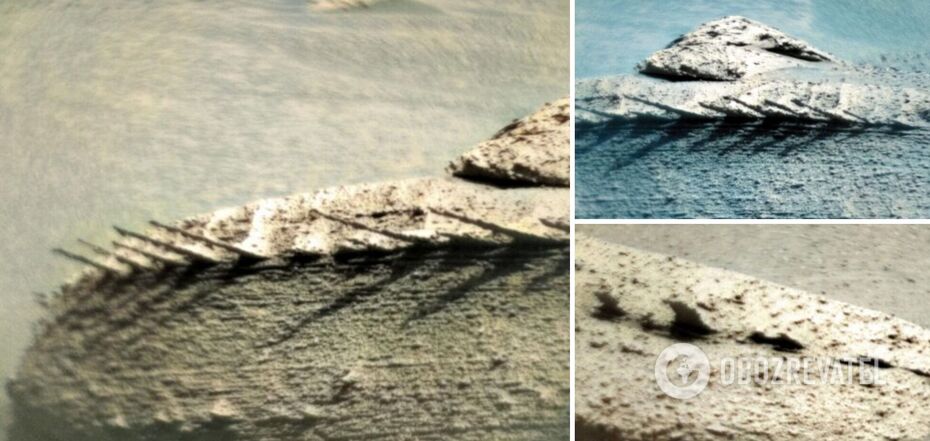Life
Is it a spine or antennae? Astrobiologist reveals the most bizarre rock in 20 years of Mars exploration
NASA's Curiosity rover has photographed bizarre rocks on the surface of the red planet, with strange structures protruding from them, similar to bones or antennas. The picture was taken on the Martian day Sol 3786 (1 April), but it is not a scientific joke at all.
Natalie A. Cabrol, an astrobiologist and director of the Carl Sagan Centre for the Study of Life in the Universe, wrote about the bizarre structure on the surface of the distant planet on her Twitter page. She noted that she had never seen anything like this in her many years of studying the red planet.
"In 20 years of studying Mars, this is the most bizarre rock I have ever seen. I can't wait to get a microscopic image of it," Cabrol wrote.
She added that the photo was taken in Gale Crater and is part of a panoramic image consisting of a large number of photos. Gale Crater is probably a dried-up lake with a diameter of 154 km, estimated to be about 3.5-3.8 billion years old.
The photo shows that bizarre cyst-like structures of approximately the same height stick out of the stone. The distance between the "bones" is also quite symmetrical, which makes the discovery even more interesting.
However, Cabrol warns against conspiracy theories when asked whether the photo shows the bones or even the skeleton of a prehistoric creature.
"Remnants of ripples after a lot of erosion... Stunning effect, though," she clarified.
Other Twitter users in the comments section of Cabrol's post also began to speculate on what they had seen. Proponents of conspiracy theories and the mystical talked about antennas, remnants of reinforcing mesh, the spine of an ancient Martian fish or even a snake/dragon. Others were inclined to believe that it was a natural process that humanity had probably never seen on Earth before.
"So, most likely, this is not the spine of a Martian snake, but... I've never seen anything like it on Earth. Maybe it's just a 'low and slow' erosion mechanic? Whatever the case, it looks like geology that we are not familiar with," said Agent NaN user.
Geology professor Christy Rowe suggested that it was a technical error.
"It looks like a combination of shadows and a photographic stitching error," she wrote.
User Andrew Baron also suggested that it could be magma.
"They may have formed from magma that found its way up through cracks in the thick crust and then formed during rapid cooling," he wrote.
Twitter user Martin Weil suggested: "I think it's the wind. If it blows over loose sand for a sufficiently large number of eons, then eventually any geometric shape we know can emerge. You just need to be patient." As for wind erosion, it is worth mentioning that on Earth, the wind can also create very bizarre shapes from sand, such as the famous "sand ladders" (see photo here).
At the same time, user Liam Gunn refused to believe in a natural explanation, noting that "I'm happy to believe it's the back of a fossilised Martian dragon curled up in its final resting place."
See also the full panorama from Gale Crater, where the bizarre stone was discovered:
Earlier OBOZREVATEL also told about the research of scientists who are convinced that they have found signs of life on Mars.
Subscribe to OBOZREVATEL's Telegram and Viber channels to keep up with the latest news.





























